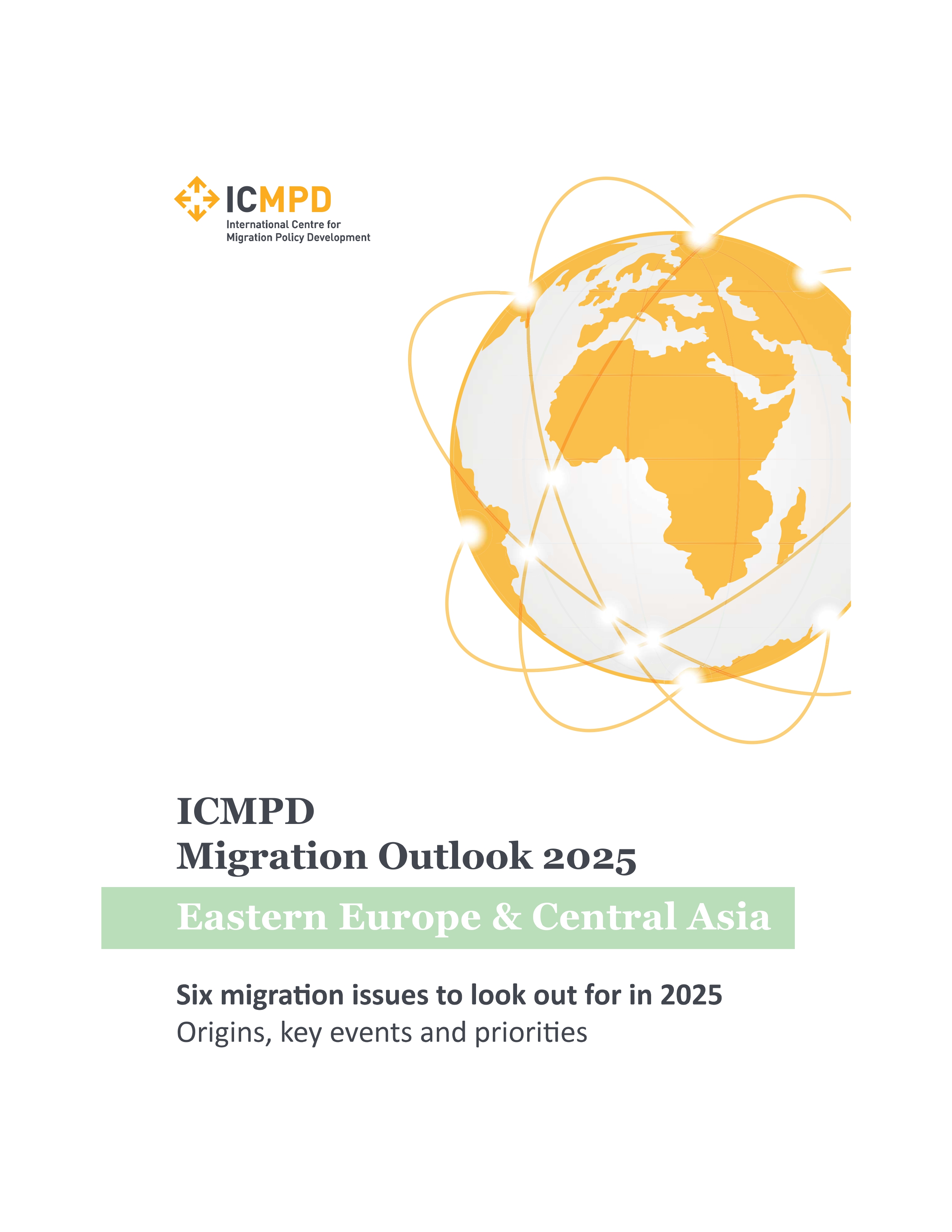The Eastern Europe and Central Asia (EECA) Migration Outlook presents an analysis of the key events and trends that shaped migration in the EECA region in 2024. Simultaneously, it offers a cautious outlook into areas and issues that may affect migration and mobility to, within and from EECA in 2025. In a non-exhaustive way, the publication addresses related developments in the twelve EECA countries – Armenia, Azerbaijan, Belarus, Georgia, Kazakhstan, Kyrgyzstan, Moldova, Russia, Tajikistan, Turkmenistan, Ukraine, and Uzbekistan. The analysis is based on ICMPD’s regional expertise and desk research from official and public data sources to ensure grounded understanding of regional dynamics.
Migration in 2024 continued to be shaped by global instability, geopolitical realignments, and the aftermath of major crises. As highlighted in the ICMPD Migration Outlook 2025, the world is experiencing an increasingly fragmented international order, with systemic rivalries, conflict-driven displacement, economic shocks, and the weaponization of migration influencing global mobility. The countries of Eastern Europe and Central Asia are not immune to these global dynamics, with large-scale conflict-induced displacement emerging as a defining feature of the region, primarily due to Russia’s war of aggression against Ukraine, but also the aftermath of other conflicts. The dissolution of the Soviet Union removed many of the structures in place to control ethnic tensions and national rivalries and gave way to what scholars have called ‘the wars of Soviet succession’, including the fighting in Nagorno-Karabakh, which has led to the displacement of over one million people. Some of these conflicts have been ongoing for thirty years or more and prospects for lasting peace remain low. Meanwhile, domestic political developments are increasingly shaping migration discourses and priorities. In 2024 and early 2025, several countries in the region – Belarus, Georgia, Moldova, and Russia – held important elections, with vastly different outcomes and possible impacts on migration. At the same time, economic and labour migration trends continue to evolve. Traditional corridors are under strain as migrants and their countries of origin weigh economic gains against growing risks in established destination countries, particularly in Russia, which remains the primary labour market for many Central Asian migrants.
This Outlook examines these various developments, starting with an analysis of the situation in Ukraine, Moldova, Central Asia, Armenia, and Azerbaijan. It then switches to regional migration trends, exploring key structural drivers such as economic performance, labour migration patterns within and from the region, displacement and protection dynamics, as well as irregular migration and the return of EECA nationals from the EU. The final section focuses on the EU accession prospects of Ukraine, Moldova, and Georgia, the deepening cooperation between the EU and Armenia, and the evolving migration policy landscape in Russia.
Access the Outlook here to discover six migration issues to look out for in 2025.



